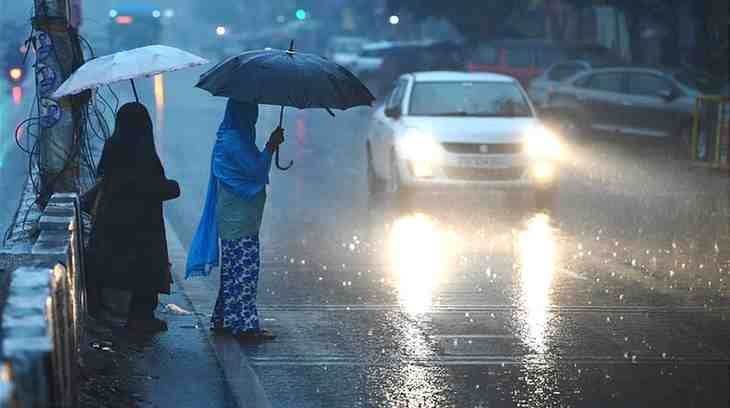Heavy Rains Batter Delhi, Trigger Severe Waterlogging and Flight Disruptions
Heavy rainfall lashed Delhi in the early hours of Sunday, bringing the national capital to a standstill in several areas. The downpour, which began overnight, caused widespread waterlogging, disrupted traffic movement, and significantly affected flight operations at the Indira Gandhi International Airport. As of 10:21 am on August 3, at least 62 flights were reported delayed and four cancelled, according to travel app Ixigo.
Commuters faced a tough time navigating through the city as arterial roads and key intersections were inundated with rainwater. Among the worst-hit areas were Vijay Chowk, Connaught Place, Sarojini Nagar, AIIMS, Janpath, Lajpat Nagar, Minto Bridge, and Panchkuian Marg. The severe water accumulation led to traffic snarls and stranded vehicles in low-lying zones.
Though the India Meteorological Department (IMD) had initially forecast light to moderate rainfall for Delhi-NCR, it had not issued any alert for the capital city by midday. However, given the intensity of the rains, local authorities were put on high alert, and emergency teams were mobilized to tackle flooding and clear clogged drains.
Northern States on High Alert as Monsoon Intensifies
While Delhi struggled with the immediate aftermath of the heavy rain, several parts of northern India were placed under red alert by the IMD. The alert, which is the highest in the IMD’s four-tier warning system, indicates the likelihood of extremely heavy rainfall in select regions.
In Haryana, districts such as Kurukshetra and Ambala have been forecast to receive heavy to very heavy rainfall through the afternoon. Similarly, parts of Punjab including Patiala and Mohali are bracing for intense showers and thunderstorms. The IMD has also placed Chandigarh under an orange alert, cautioning residents of light thunderstorms accompanied by winds reaching up to 40 kmph.
Southern parts of Himachal Pradesh have also been flagged for possible heavy rainfall, raising concerns over potential landslides and road blockages in hilly terrain.
Uttar Pradesh and Madhya Pradesh Also Affected
In Uttar Pradesh, the IMD issued red alerts for Prayagraj, Amethi, Raebareli, and Kaushambi, warning of very heavy rainfall along with a high probability of cloud-to-ground lightning. The rest of the state remains under varying degrees of alert — orange and yellow — indicating moderate to heavy rainfall in scattered regions.
Further south, in Madhya Pradesh, the red alert was extended to Khajuraho, Satna, Rewa, and Maihar. Authorities in these regions have been advised to remain vigilant as intense rain, thunderstorms, and lightning activity are expected to continue throughout the day.
Eastern and Coastal Regions Not Spared
Bihar, too, is witnessing the impact of the monsoon surge. The IMD has issued orange alerts for several western districts including Patna, Muzaffarpur, Gaya, and Darbhanga. Heavy rains are expected to persist, and local administrations have been asked to prepare for waterlogging and transport disruptions.
On the western coastline, the IMD has issued yellow alerts for the Konkan region. From Querim in Goa to Kovalam in Kerala, light to moderate rainfall is predicted, with overcast skies expected to persist. While the alerts are not severe, caution has been advised for fishermen and residents in low-lying coastal areas.
Both the Lakshadweep and Andaman and Nicobar Islands are under yellow alerts, with predictions of rainfall and gusty winds that could affect marine activity and transport operations.
Precautionary Measures Underway
In view of the red alerts and ongoing rainfall, local governments and disaster response teams across affected regions have been placed on high readiness. Authorities are urging citizens to avoid non-essential travel, stay indoors during thunderstorms, and report waterlogging or fallen trees to municipal helplines.
As India’s monsoon season intensifies, more states are expected to witness shifting weather patterns and extreme events. Citizens are advised to stay updated with the latest IMD bulletins and follow safety protocols to avoid weather-related hazards.








